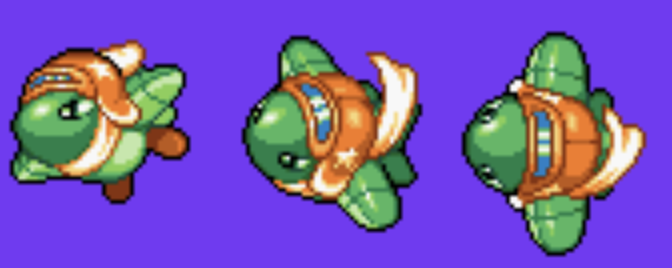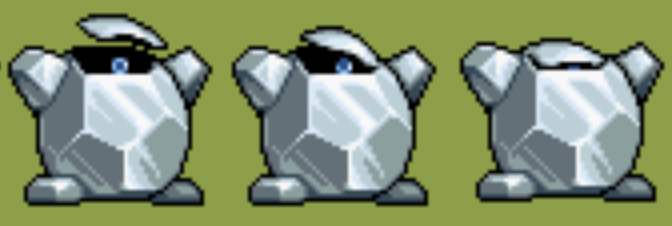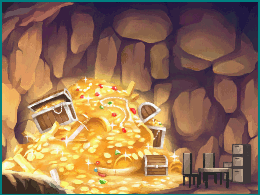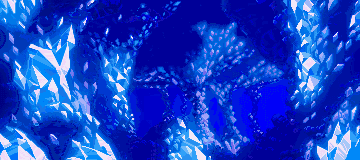Star Slam Stances: Longing for Kirby Pixel Art
- Collin Hall
- Jan 17, 2024
- 5 min read
Updated: Jan 30, 2024
HAL has not released a pixel-art Kirby game in over ten years.
When that fateful October Nintendo Direct aired in 2013 and a polygonal version of Kirby was unveiled for the company's next-generation 3D handheld, I knew it was over. As exciting as the reveal was, for me, it was overshadowed by one thought: we're never getting another pixel art Kirby game again.
A decade later, no more pixel Kirby—and I miss him! I close my mind and imagine Kirby; there he is, bright pink pixels shining from his Nightmare in Dream Land sprite as if from an angel.
It wasn't just Kirby; the Nintendo 3DS era was a pixel art bloodbath for many franchises. Gone were those imposing Pokemon animated battle sprites from Black and White, the fierce attack animations of Fire Emblem units, and the glittery simplicity and painterly backgrounds of Kirby's Game Boy Advance and DS-era sprites.
Pixel art is a beautiful form of expression because it puts complete control in the artist's hands. It's a lot closer to traditional hand-drawn artwork than 3D modeling. To create landscapes like the one below, a pixel artist has to understand real-life lighting, how it reflects and interacts with surfaces at different angles, and then has the daunting task of simplifying all that down to a 2D plane.

A pixel artist rendering Kirby will have seen a lit sphere and will know where to make it dark, make it light. They will boil the lighting elements down to what is important and expressive, sometimes choosing to make the brightest or darkest elements just a single dot on the character.
That's the same task painters and illustrators take on every day. So that first Triple Deluxe trailer, with its flat lighting and jagged edges, personally felt like a real step down. A sphere lit by a lighting algorithm on a weak handheld system is fighting an uphill battle to do what the human touch can do very simply.
Are we supposed to be impressed just because Kirby is now 3D on a handheld system?

I look at Kirby's Game Boy Advance and DS-era games and imagine myself in a real place. Those games have some of the best pixel art I have ever seen. Have you noticed that Kirby: Squeak Squad and Kirby and the Amazing Mirror are weirdly realistic?
The environments here are imposing. They tower over the player and communicate without words that Kirby is on a world-spanning quest. I imagine myself in those environments, and if I were there, I'd be a lot less brave than Kirby. Check out all of these backgrounds just from Nature Notch, World 2 of Kirby: Squeak Squad.
Credit: Mageker and Spriter's Resource
Kirby: Triple Deluxe's 3D landscapes don't capture that same sense of place. The game's enviornments gather the abstract elements present in a lot of Kirby's pixel outings and translates them almost literally into 3D without considering what was lost in the transition.
I also really love some of the old character sheets for mini-bosses. Doc from Squeak Squad looks great, and so does Bombar from Amazing Mirror. Gosh, they're so cute—the artists managed to pack a lot of detail into characters that take up just a tiny sliver of screen space. The lighting on these characters can also be really impressive.
Doc, Bombat, and Big Meltun. Credit: Kung Fu Man
Big Meltun from Squeak Squad (there on the bottom), is especially impressive to me because its shiny metal body reflects light in all sorts of directions, and the artist was able to communicate his sheen with just some subtle color decisions.
The bottom left panel of Big Meltun's body should look shiny but not too shiny, and the artist nails this with just a few streaks of a single blue-grey color contrasted against his solid body color. And look at how much detail is packed into his small arms; there's a lot of lighting information being communicated here.
Triple Deluxe also, more than ever, has me wondering about Kirby's hands. Pixel art Kirby looks singular; his curvy sides flow right into his plump arms and feet, like Kirby is all one smooth shape.
That 3DS model always looked out of motion to me, like a play-dough rendering of Kirby forged in a factory. First, his round body is assembled, and then two arms and two little red feet are glued on. How do his arms even move? Why are there seam lines on his hands? This really rocked my world, no joke.
Kirby's GBA and DS-era character sprite (Super Star Ultra aside) was a perfect representation of the character: bright and small, but with enough detail to make him come to life. The lower half of Kirby's belly is shadowed with a stripe of dark pink pixels that form the subtle darkness cast from his "upper body." Simple and effective!
Also, notice Kirby's left foot. It has a white dot as if something bright is shining off it. Nice shine, Kirby! You look juicy here.
The Triple Deluxe model just doesn't come together. I can't help but see the parts that articulate Kirby's body instead of just seeing Kirby. No juice. His arms and feet also have a matte plastic texture now and no shine. The new perspective makes me wonder how Kirby can hold that sword.
Triple Deluxe was so similar tonally and thematically to the pixel art outings before it, without looking any better, that it made me wonder why the series transitioned at all. The first few 3D Kirby games, including Star Allies, would have looked better with faultless pixel art instead of technically compromised 3D.
Today, Forgotten Land is so great that I'm dreaming of a 3D future for Kirby. It wasn't just "pixel Kirby, but 3D now," it was a new vision for Kirby in a pseudo-realistic world that shed design elements originally imagined for 2D pixel art. The environments are grounded, and HAL finally imagines a cohesive world free of contextless floating platforms and random splashes of color. All of the platforms and interactive elements feel like they have a reason to exist in the fictional world itself. That old formula worked in a 2D space but felt a little stale in 3D, and I think HAL agrees.
But for a while there, it felt like HAL sacrificed a weather-tested art form for something "new."
I think the Halberd has sailed for Kirby's pixel art days.
Maybe future Kirby spin-offs can come in pixel form once again, but it seems unlikely we will ever return to that style. Pixel art lets developers make ambitious worlds with a smaller budget and a smaller team, so maybe if we get something like a Kirby role-playing game, it'll enter into dialogue with the thousands of pixel art RPGs that came before it...
One thing before I go: Kirby and friends received updated, official pixel art renderings in a 2022 merch line, exclusive to Japan, called "Pixel Kirby." These versions are super simple without any shading. They're supposed to look retro, but are different than the actual retro Kirby sprites. Weird!
*****
Star Slam Stances is the Kirby Informer Staff's column for opinion and commentary pieces. All words reflect that of the author's opinions. Be sure to share with us your thoughts on the topic discussed above in the comments section or on our social pages!































